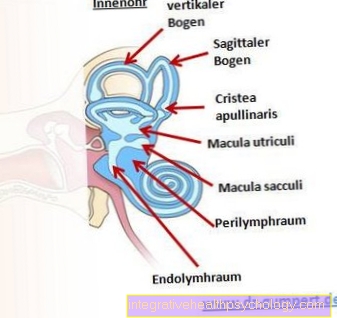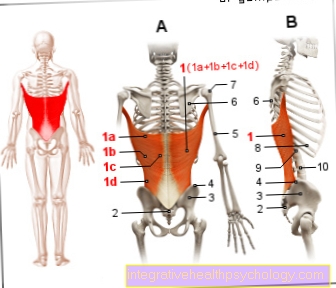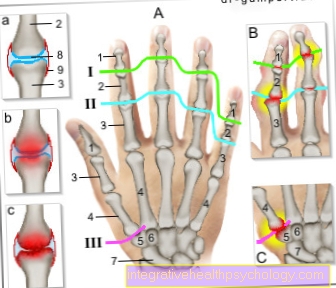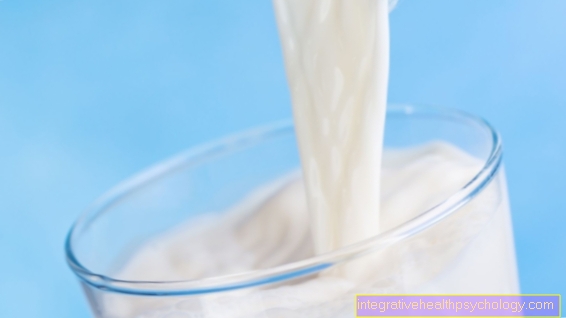Metabolic Balance
What is Metabolic Balance?
The Metabolic Balance diet is a nutritional concept developed by nutritionist Wolf Funfack.
The distributors of Metabolic Balance advertise with intensive customer service and individually created plans that guarantee the graduates lose weight and help them lead a healthier lifestyle. The idea behind Metabolic Balance is that the metabolism supposedly reacts differently to food from person to person, which requires an individual approach. On this basis, various blood values are checked and a plan is drawn up. The plans are distributed by many of the company's employees across Europe. The concept of Metabolic Balance has come under fire due to a lack of scientific evidence.
Read more about this at: Lose weight by changing your diet

Metabolic Balance process
The plans of the nutritional concept are created based on the individual preferences and specifications of the respective person, but the process is comparable for each participant.
The Metabolic Balance Diet comprises a total of four phases and lasts about four weeks, whereby the last phase can be carried out as a maintenance phase and is intended to stabilize the weight achieved. The first phase of the diet is called the preparation phase, it is supposed to prepare and cleanse the body for the upcoming change in diet. The second phase is the "strict conversion phase", here the calorie intake is extremely reduced and a significant weight loss is achieved. In the third phase, the "relaxed transition phase", various foods are added to the nutrition plan to test how the body reacts to them. The "maintenance phase" should get the target weight without adhering to overly strict guidelines.
First phase
The first phase of the Metabolic Balance Diet is also known as the “preparation phase”. The aim is to prepare the body for the upcoming change. As with a fasting cure, the body should also be "cleansed" here. This also includes emptying the bowels using Glauber's salts or other laxatives. It lasts two days in total. The body is fed extremely little food and a lot of fluid, which can already cause a significant loss of weight. This is mainly water that is excreted by the body when the glycogen stores are emptied of the liver and muscles.
The foods allowed in this phase include a light breakfast, vegetables in the form of soups or raw vegetables and salads. Except for a piece of fruit, you should forego the naturally high sugar content. It is also important to drink a lot in the first phase. At least two liters of water or tea, but not soda or other high-calorie drinks are recommended.
Second phase
The results of the blood test are the basis for creating a personal diet plan and the permitted foods in the second phase. The second phase is also known as the “strict conversion phase”.
Some rules are the same for all participants. This includes taking a maximum of three meals a day, snacks between meals are prohibited. There should be at least five hours between each meal. This is to prevent food cravings. A meal must not last longer than an hour and must always begin with the start of protein intake (in the form of meat, fish, etc.). Only one type of protein is allowed at a time, and each meal should contain a different type. Ingesting food after 9 p.m. should be avoided.
Each participant should drink up to two and a half liters throughout the day. Coffee and tea are only allowed after meals.
The last rule is that exactly one apple should be eaten per day. In general, the weight loss plans of Metabolic Balance are strongly oriented towards “low carb” diets despite their apparent individuality. Pasta, rice, potatoes and bread have largely been removed from the plan. In addition to carbohydrates, fats are also avoided. If possible, no oil should be used even for frying. With a high protein intake, a high weight loss is achieved with a low calorie intake, which protects the muscle mass to some extent and primarily breaks down fat.
Third phase
In the "relaxed changeover phase", carbohydrate supplements are now allowed again with one of three meals. Also new are the "cheat days", during which the reins can be loosened further. The participant should find out how they react to certain foods. When gaining weight, the rules should be followed a little more strictly, generally the goal of this phase is to maintain or lose further weight. In the third phase, alcohol in the form of wine or beer is also permitted in moderation. A total of about three tablespoons of vegetable oil can be used for cooking or for salads. Sport and additional exercise should now also be incorporated into everyday life.
Fourth phase
Those who have successfully completed the preceding phases should now know themselves and their bodies very well. In the “maintenance phase”, no food is banned any more. If you cannot maintain your weight, you should switch to a more strict diet at any time. In this phase in particular, many participants notice an increase in weight; intensive support is offered here by the Metabolic Balance advisors.
In general, you should find a way for yourself to keep your weight healthy and permanent. This includes a varied, nutrient-rich diet, as well as regular exercise and sport. Even small exceptions should become part of a normal diet over the long term.
Metabolic Balance Side Effects
The Metabolic Balance Diet can generally produce good results when properly followed.
However, it has some dangers. Especially in the strict phase of the diet, the intake of calories is reduced to an extreme minimum. Many participants suffer from the low intake and are weak and drained. A supply of all the necessary nutrients may also not be guaranteed. Attention should be paid to this in order to prevent damage from nutrient deficiencies.
The weight loss with Metabolic Balance, especially at the beginning of the diet, motivates many participants and is one of the reasons for the popularity of the program. However, one should be aware of the fact that, at the beginning, mainly water is washed out. There is also the risk that weight will be gained again after the strict phase. The cause is the replenishment of glycogen stores through the intake of carbohydrates, but also the excessive intake of calories when the basic requirement has fallen. Anyone who relapses into old eating patterns after the diet or even eats more than before can expect an increase in weight even beyond the initial weight. Thus, even after the diet, emphasis must be placed on a balanced diet and exercise.
diarrhea
In the first phase of the Metabolic Balance Diet, intestinal cleansing is achieved using Glauber's salts or other laxatives. Gastrointestinal complaints in the form of diarrhea can also occur in the first few days after the change in diet. The cause is the high intake of fluids and proteins, as well as fiber in the form of vegetables and salad.
However, the body usually gets used to the change. A doctor should be consulted if diarrhea or other symptoms persist. If in doubt, the diet must be broken off, as extreme diarrhea can lead to fluid and electrolyte loss. Home remedies such as flaxseed can also be used for milder complaints.
Criticism of Metabolic Balance
According to the inventors of the nutritional concept, the metabolism differs significantly from person to person, which requires an individual approach to weight loss. It also justifies the expensive blood tests, on the basis of which a person's nutrition plan is drawn up. However, there is no scientific basis for these assumptions.
The success of the concept, however, results from the simple principle of weight loss. A decrease is achieved when fewer calories are consumed than the body consumes during the day. With the low calorie intake in the strict phase of the diet, weight loss occurs. The high value of proteins and the low intake of carbohydrates is justified, as this results in a low calorie density, a long-lasting feeling of satiety and an adequate intake of proteins to maintain muscle mass. Metabolic Balance is primarily a commercial idea. Blood tests, counseling sessions, seminars, books or special foods and dietary supplements support a large number of people in their plan to lose weight. In addition to metabolic balance, there are also cheaper alternatives to lose weight permanently and healthily.
Read about this: Low carb diet
Medical evaluation of Metabolic Balance by
From a medical point of view, Metabolic Balance is not necessarily advisable if some points can be met in this form of nutrition.
First of all, despite the low calorie intake, all nutrients must be covered. In addition to a sufficient supply of protein, this also includes the intake of fiber, vitamins, trace elements and essential fats. The last point in particular is difficult to meet in the context of the “strict phase”. You should attach importance to the sufficient intake of fatty fish, but also vegetable oils or nuts.
In the subsequent phases, old eating patterns should not be returned to and alcohol and other luxury foods such as sweets should continue to be an exception, while healthy and balanced foods should form the basis of the diet. Especially in the strict phase, the participant can react to the low calorie intake with severe complaints. Physical activity or everyday stress can also become a challenge. Therefore, this phase should not be carried out for longer than two weeks and emphasis should be placed on a balanced diet with a lower calorie deficit.
What are the risks / dangers of Metabolic Balance?
The first two days can already be a challenge. Especially in the initial phase, those who want to lose weight will clearly feel the effects of carbohydrate withdrawal. This generally includes weakness, malaise, tremors or even fainting. Once the body has switched to burning fat for energy, these symptoms should gradually go away.
Due to the low calorie intake, lower performance can be determined even during the "strict phase". Extreme exertion such as endurance sports should be avoided if you are physically weak. Regular exercise and sport should be on the daily schedule, especially in the subsequent phases, as they are an important part of a healthy lifestyle and support weight loss and weight loss.
Our next article could also be of interest to you: Set point theory
Where can I find good Metabolic Balance recipes?
Metabolic Balance is carried out by numerous consultants to the company in Germany and around the world. Since the list of permitted foods is different for each participant, recipes are also very individual. You can get ideas from relevant literature or use the Internet for research. Many recipes can also be adapted to your own specifications. If you have any problems, the Metabolic Balance advisors will help.
How much can / should I lose weight with Metabolic Balance?
In the first two phases in particular, when the calorie intake is sometimes below 1000 calories, a large amount of weight loss can be achieved. In the first few days, this decrease is mainly due to the loss of water that is flushed out of the liver and muscles when the glycogen stores are emptied. In the first few weeks, participants report weight losses of up to five kilos; in the moderate phases, a loss of half a kilo per week is realistic and healthy.
How can I avoid the yo-yo effect with this diet?
The yo-yo effect describes the weight gain after the end of a diet, which can even exceed the original starting weight. The body's basal metabolic rate decreases as a result of the weight lost. If, however, as before, or even more energy is supplied, an increase inevitably occurs. Just filling up the glycogen stores through the intake of carbohydrates results in a slight increase, since water is also stored in the body. That is why it is important to pay attention to your diet even after a diet and to eat a balanced and varied diet without getting an excess of calories through food. Exercise and exercise are another support and should be part of a healthy lifestyle.
Read about this: Lose weight without the yo-yo effect
What alternative diets are there to Metabolic Balance?
There are many concepts similar to metabolic balance. They belong to the category of "low carb" diets and rely on a high intake of proteins with a low carbohydrate intake and a large calorie deficit. Crash diets, which are strictly discouraged, also achieve an extreme deficit. They can bring adverse health effects and risks and are in no case suitable for healthy and long-term weight loss.
In general, concepts with a moderate calorie deficit should be preferred. This achieves slower but long-term success. So-called mixed diets such as “Weight Watchers” or simple calorie counting are suitable. All foods are allowed in moderation. The participant gets a feeling for healthy food without restricting himself too much. These diets must also be adhered to over a long period of time and achieve long-term success. In addition to a balanced diet, sport and exercise should also have a place in everyday life. They support weight loss as well as physical and mental health.
Read about it:
- Lose weight with exercise
- What is the best diet?
What is the cost of Metabolic Balance?
The exams and blood tests that are required to create a personal weight loss plan as part of Metabolic Balance are extremely costly. The analysis alone costs up to € 100. Together with a basic consultation, more than € 350 or more is due. Additional costs are incurred for food supplements such as laxatives or vitamin preparations, as well as for additional advice. The diet consists to a large extent of protein in the form of meat, fish or eggs, which can increase expenses depending on previous purchasing behavior. However, there are no expenses for alcohol or sweets and snacks, as well as fast food or dining out.
Is that also possible vegan or vegetarian?
Metabolic Balance plans are individualized and based on blood tests. In addition, personal preferences can also be integrated, as well as allergies or intolerances. In consultation with the consultant, vegan or vegetarian alternatives can also be integrated into the plan. Here, too, it is important to ensure that you have a sufficient intake of various proteins and to consume all other essential nutrients through a balanced diet.
Can Metabolic Balance Help Against Cellulite?
Cellulite, also known as "orange peel", occurs mainly in overweight women, especially on the thighs and buttocks, but also affects normal-weight and slim women. The reason is a genetic weakness of the connective tissue, for example due to water retention, poor blood circulation or thin skin. The unloved dents can be smoothed out to a minimal extent through weight loss and exercise, but this is not entirely possible with the appropriate disposition. Weight loss as part of Metabolic Balance can help, and additional exercise should also be considered.
Read about this: Lose weight on the thigh
Metabolic balance in pregnancy - is that possible?
Pregnancy is a great challenge for the female body. Anyone who is only moderately overweight should definitely not try to lose weight during pregnancy in order to ensure sufficient nutrients for the unborn child. Whether or not the individual food requirements should be followed must be discussed with the gynecologist. A low-calorie diet should be avoided in any case; instead, emphasis should be placed on a balanced diet and sufficient exercise.





























